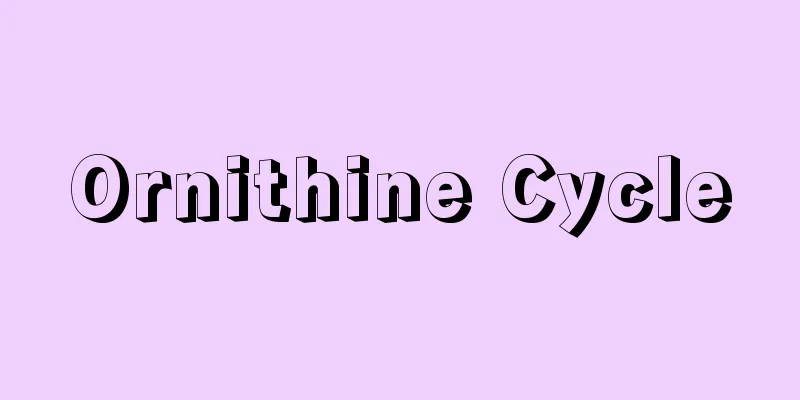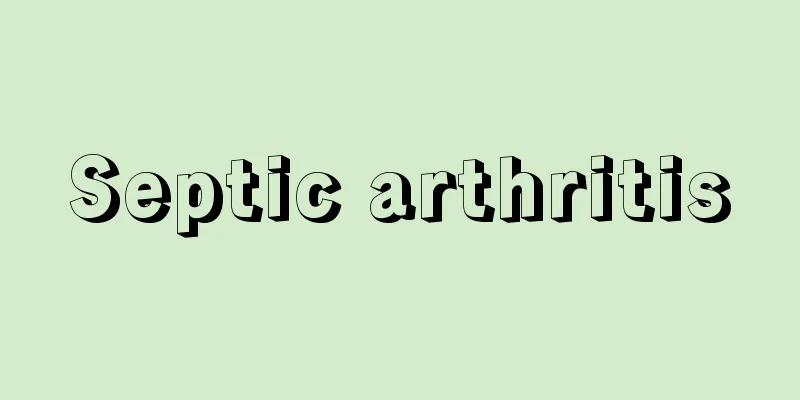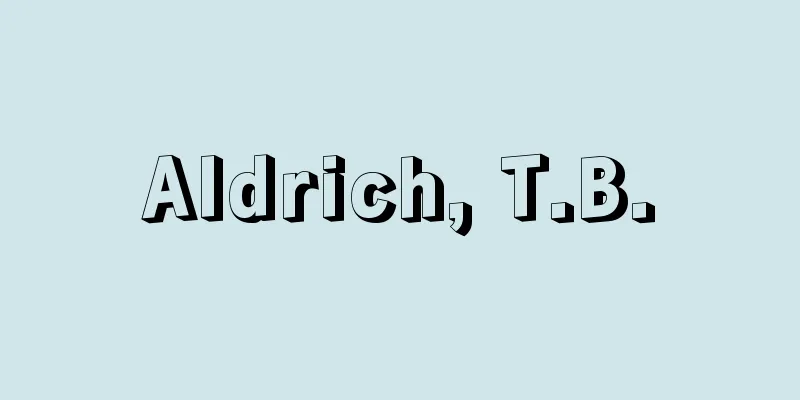Ornithine Cycle

|
This is a reaction pathway that produces urea in animals, and is also called the urea cycle. When we eat foods that contain nitrogen atoms, such as proteins, some of the nitrogen atoms become excess and are released in the form of ammonia. Aquatic invertebrates and bony fish excrete ammonia as is, but terrestrial animals convert ammonia, which is highly toxic to cells, into a harmless form and accumulate it in the body before excreting it. Reptiles and birds convert ammonia into insoluble uric acid and excrete it, leaving white crystals (guano, bird droppings) in areas where many birds live. Cartilaginous fish, amphibians, reptiles such as turtles, and mammals also convert ammonia into urea. The synthesis of ammonia into urea is mostly carried out in mitochondria in the liver, and the pathway through which the substance is converted is the ornithine cycle, which is thought to be the main pathway for urea production. This cycle was experimentally demonstrated in 1932 using liver slices by H. A. Krebs and Kurt Henseleit (1907-1973), who discovered the TCA cycle. For this reason, it is also called the Krebs-Henseleit cycle. The ornithine cycle consists mainly of three metabolic pathways for ornithine, citrulline, and arginine, and the enzymes involved in each reaction have been purified and crystallized from the liver, plant seeds, etc. First, carbamyl phosphate synthase reacts one molecule of ammonia (or the amino group of glutamine) and carbon dioxide with the phosphate of ATP (adenosine triphosphate) to produce carbamyl phosphate. The enzyme ornithine transcarbamylase combines carbamyl phosphate and ornithine to produce citrulline. Citrulline is converted to argininosuccinic acid by argininosuccinic acid synthase, which removes an amino group (another molecule of ammonia) from aspartic acid, and then argininosuccinic acid lyase converts it to arginine. Finally, arginine is broken down into urea and the starting material ornithine by the enzyme arginase. Ornithine is used again in this cycle, so in the end, one molecule of urea is produced from two molecules of ammonia. Uric acid is produced through a more complex reaction, with each molecule containing two molecules of urea. The amino acid arginine is synthesized in cells through a similar reaction pathway, first synthesizing ornithine from glutamic acid, which then becomes arginine via citrulline. The ornithine cycle is one of the important physiological functions of the liver, and if this cycle does not function properly, hyperammonemia can occur, which is life-threatening. Tadpoles, which live in water, excrete ammonia, but frogs, which live on land, excrete urea, which is consistent with the evolution of vertebrates from an aquatic to a terrestrial lifestyle. [Kikuchi Takahiko] "Stryer's Biochemistry, 6th Edition (2008, Tokyo Kagaku Dojin), written by Burke et al. and supervised by Irimura Tatsuro et al." [References] | | | |Arginine| | | | | | | | | |©Shogakukan "> Ornithine Cycle (reaction pathway diagram) Source: Shogakukan Encyclopedia Nipponica About Encyclopedia Nipponica Information | Legend |
|
動物体内で尿素の生成にあずかる反応経路で、尿素回路ともよばれる。タンパク質などの窒素原子を含む食物をとると、そのうちの一部の窒素原子は余分となり、アンモニアの形で遊離される。水中にすむ無脊椎(むせきつい)動物や硬骨魚類ではアンモニアのまま排出するが、陸上生活をする動物では細胞にとって毒性の強いアンモニアを無害な形にし、体内に蓄積してから排出している。爬虫(はちゅう)類や鳥類ではアンモニアを不溶性の尿酸に変え排出するため、多数の鳥の棲息(せいそく)する所には白色の結晶(グアノ、鳥糞(ちょうふん)石)が残される。また軟骨魚類、両生類、爬虫類のうちカメの仲間、哺乳(ほにゅう)類ではアンモニアを尿素に変える。アンモニアから尿素への合成は大部分肝臓内のミトコンドリアで行われ、そのときの物質の変化経路がオルニチン回路で、これが尿素生成の主要な経路と考えられている。この回路は、TCA回路を発見したH・A・クレブスとヘンスライトKurt Henseleit(1907―1973)によって、1932年に肝臓の切片を使い実験的に証明された。このことからクレブス‐ヘンスライト回路ともよばれる。 オルニチン回路はおもに三つの化合物、オルニチン、シトルリン、アルギニンの代謝経路からなっており、それぞれの反応に関与する酵素は肝臓、植物の種子などから精製、結晶化されている。まずカルバミルリン酸合成酵素の作用により1分子のアンモニア(あるいはグルタミンのアミノ基)と炭酸ガスにATP(アデノシン三リン酸)のリン酸が反応してカルバミルリン酸がつくられる。酵素オルニチントランスカルバミラーゼの作用によりカルバミルリン酸とオルニチンが結合し、シトルリンとなる。シトルリンはアルギノコハク酸合成酵素によりアスパラギン酸からアミノ基(もう1分子のアンモニア)をとり、アルギノコハク酸となり、続いてアルギノコハク酸リアーゼの作用でアルギニンになる。最後にアルギニンは酵素アルギナーゼにより、尿素と出発物質のオルニチンに分解される。オルニチンはふたたびこの回路で使われるため、結局、2分子のアンモニアから1分子の尿素がつくられていることになる。尿酸はさらに複雑な反応を経てつくられ、1分子中に尿素が2分子含まれている。細胞内でアミノ酸のアルギニンが生合成されるときも同様な反応経路をとり、まずグルタミン酸からオルニチンが合成され、シトルリンを経てアルギニンとなる。 オルニチン回路は肝臓の重要な生理作用の一つであり、この回路の働きが十分でないと高アンモニア血症となり生命に危険を及ぼす。また水中生活をするオタマジャクシはアンモニアを排出しているが、陸上生活をするカエルになると尿素を排出するようになり、脊椎動物が水中生活から陸上生活へと進化してきた経過とよく一致している。 [菊池韶彦] 『バーク他著、入村達郎他監訳『ストライヤー 生化学』第6版(2008・東京化学同人)』 [参照項目] | | | | | | | | | | | | | | |©Shogakukan"> オルニチン回路(反応経路図) 出典 小学館 日本大百科全書(ニッポニカ)日本大百科全書(ニッポニカ)について 情報 | 凡例 |
>>: Ornithine - Ornithine (English spelling)
Recommend
Retrograde satellite - Gyakko Eisei
A moon that orbits its parent planet in the opposi...
Waseda
This area is located on the northern edge of Shin...
Fin-stabilizer
...Later, a device was invented that uses a diffe...
Mallory, George Herbert Leigh
Born June 18, 1886 in Moberly, England [Died] June...
Collaboration - Kyodo
(Noun) Two or more people working together for the...
Furuhata Tanemoto
Forensic pathologist and human geneticist. Born i...
Quchum Khan (English spelling)
In the second half of the 16th century, Siberia c...
Heterolytic cleavage
…Carbon radicals with an unpaired electron on the...
Scandal (English spelling)
Originally, it meant a court case where it was di...
Polyantha Rose (English spelling)
…In 1875, Guyot artificially crossed an Oriental ...
Condenser - condenser
A device for liquefying gas. When only a single s...
Carnivorous - Meat-eating
It means eating animals, especially the meat of b...
Vsesoyuznaya kommunisticheskaya partiya (bol'shevikov) (English transcription) Vsesoyuznayakommunisticheskaya partiya
…It was the only political organization that cont...
Hazardous Materials Safety Technology Association
...The organization of the fire service administr...
Tally - Warifu
〘noun〙① An item made by writing characters or othe...









